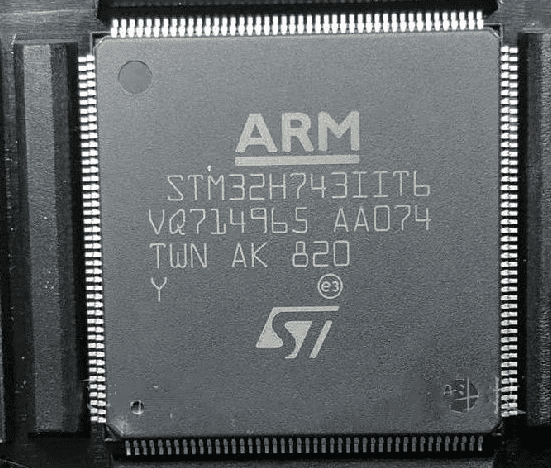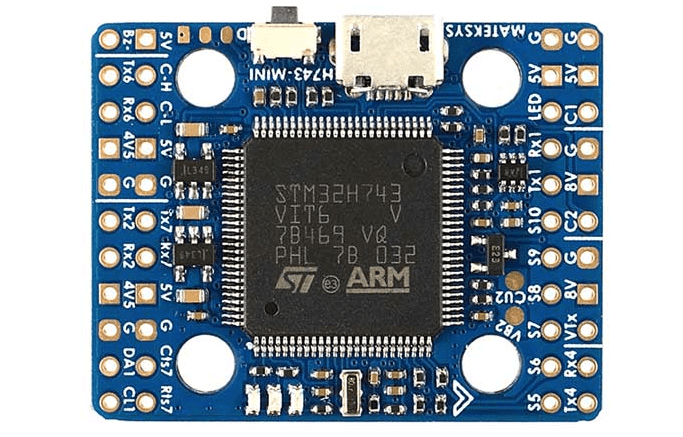Having a Microcontroller (MCU) that can integrate a working memory and support multiple peripherals all geared towards improving the target application’s functions is awesome.
However, only a few MCUs can integrate multiple peripherals, considering that some of them work within a smaller footprint. If that is the case, it is better to go for the Microcontroller (MCU) optimized for your desired application.
STM32H743VIT6 is an all-around MCU not only because of the unique design, but also because of the excellent selections of peripherals. In this article, we explain how some of these supported peripherals help in improving its functionalities.

STM32H743VIT6 Uses Multiple Program Memories
Different types of program memories are supported here with the SRAM, and the RAM holding the higher take.
STM32H743VIT6 uses the 19KB of TCM Random-Access Memory (RAM) to open up the Microcontroller (MCU)’s optimization for relevant data and time-centric applications. This functionality is derived from the inclusion of the 128KB of DTCM RAM and the 64KB of ITCM RAM. The duo is used by the MCU to achieve the memory requirements for the time-critical routines and data.
STM32H743VIT6 also supports the 288KB and 64KB of user SRAM. It also supports a 4KB of SRAM, which is located in the backup domain. This SRAM is the basis for STM32H743VIT6 being able to retain or keep the data for as long as possible, even when the Microcontroller is operating in the lowest power modes.
The aforementioned program memory types are located in the 1 Megabyte of SRAM memory architecture provided by the STM32H743VIT6 MCU.
The other supported program memory architecture is the 1 to 2 Megabytes of Flash memory, which provides for non-volatility of the memories.
How STM32H743VIT6 Supports the Integration of More Peripherals
STM32H743VIT6 is one of the Microcontrollers (MCUs) that support the integration of more peripherals. This support is rendered by the inclusion of up to 35 communication interfaces. Examples of the supported interfaces are camera interface, FD-CAN, Ethernet MAC and the high-speed, USB 2.0.
To make the peripheral integrations more innovative, STM32H743VIT6 also supports the analog peripherals, such as the fast 16-bit ADCs and the 12-bit DACs.
STM32H743VIT6 also supports an easily extendable memory range that uses the flexible memory controller. This memory range works best with the 32-bit parallel interface, or the Dual-mode Quad-SPI serial Flash memory interface.
MCU Security
The performance of the Microcontroller wouldn’t be complete if there are no security measures in place to protect the target applications. It is for that reason that the STM32H743VIT6 has been optimized to integrate several security architectures.
First, there is a Secure Boot Secure Firmware Update (SBSFU), which helps to protect the Microcontroller (MCU)’s firmware when an important update is being made to it.
STM32H743VIT6 also supports the crypto and hash hardware acceleration, which helps to protect the MCU when it is used with technical applications.
STM32H743VIT6 also has a security feature called the Secure Firmware Install (SFI). The SFI security architecture is a set of embedded security services or processes used to authenticate and to protect the software Ips.
The protection is offered when the IPs are being used for initial programming use cases.
Graphics Peripherals
STM32H743VIT6 supports the integration of graphics-related peripherals. On the list are the JPEG Hardware Accelerator, the LCD-TFT Controller and the Chrom-ART Accelerator.
Let’s talk about them one after the other.
JPEG Hardware Accelerator
This accelerator is deployed when the STM32H743VIT6 is to be used for JPEG applications that require a faster decoding and encoding.
It is also used to enable off-loading of the Central Processing Unit (CPU).
The LCD-TFT Controller
This controller is specifically used for enabling an excellent control of the controller. It comes with dual-layer support.
The Chrom-ART Accelerator
The full name is Chrom-Art Accelerator or DMA2D. As the name signifies, it is used as an “accelerator” for speeding up the Microcontroller.
As per the information in the datasheet, the DMA2D is designed to be a graphical accelerator that offers a wide range of features, including:

- Pixel format conversion
- Advanced bit blitting
- Raw data copy
In addition to supporting the rectangle composition with blending and pixel format conversion, the DMA2D also supports the rectangle copy and the rectangle filling with a fixed color.
The most significant attributes of the DMA2D are the independency of the CPU, which means that it runs on a standalone basis and can be used to fully automate the operations. Interestingly, it can also be used to reduce the load on the Central processing Unit (CPU), as it is not operating based on that architecture.
STM32H743VIT6 Supports Multiple Power Architectures
The power or current requirements of this MCU are not left out. It supports different kinds of power modes.
Below are some of the power architectures you can find on the STM32H743VIT6 Microcontroller (MCU):
1. Different Power Modes
STM32H743VIT6 has different modes for the operating power. These include but are not limited to the VBAT that supports battery charging, the Sleep, Standby and Stop power modes.
2. Internal Power Supply
STM32H743VIT6 makes an internal power or current supply via the dedicated USB power embedding on a 3.3 volts internal regulator. The internal current is supplied to the internal PHYs.
3. The LDO
STM32H743VIT6 also supports the use of the Embedded Regulator or LDO with the configurable scalable output to supply power to the MCU’s digital circuitry.
4. Power Reset Capability
STM32H743VIT6 can also reset the power or current supply because it has been optimized to do so.
The power reset capability is derivable from the three (3) separate power domains. These power domains are already optimized to function either via the independent switching off or the independent clock-gating.
The three (3) power domains include the D1 used for the high-performance power capabilities; the D2 for the communication timers and peripherals and the D3 for the excellent combination of power management, clock control and power resetting all in one package.
Conclusion
If you are looking for a Microcontroller (MCU) that fits into a wide range of applications, and yet supports multiple peripherals, consider choosing the STM32H743VIT6.


